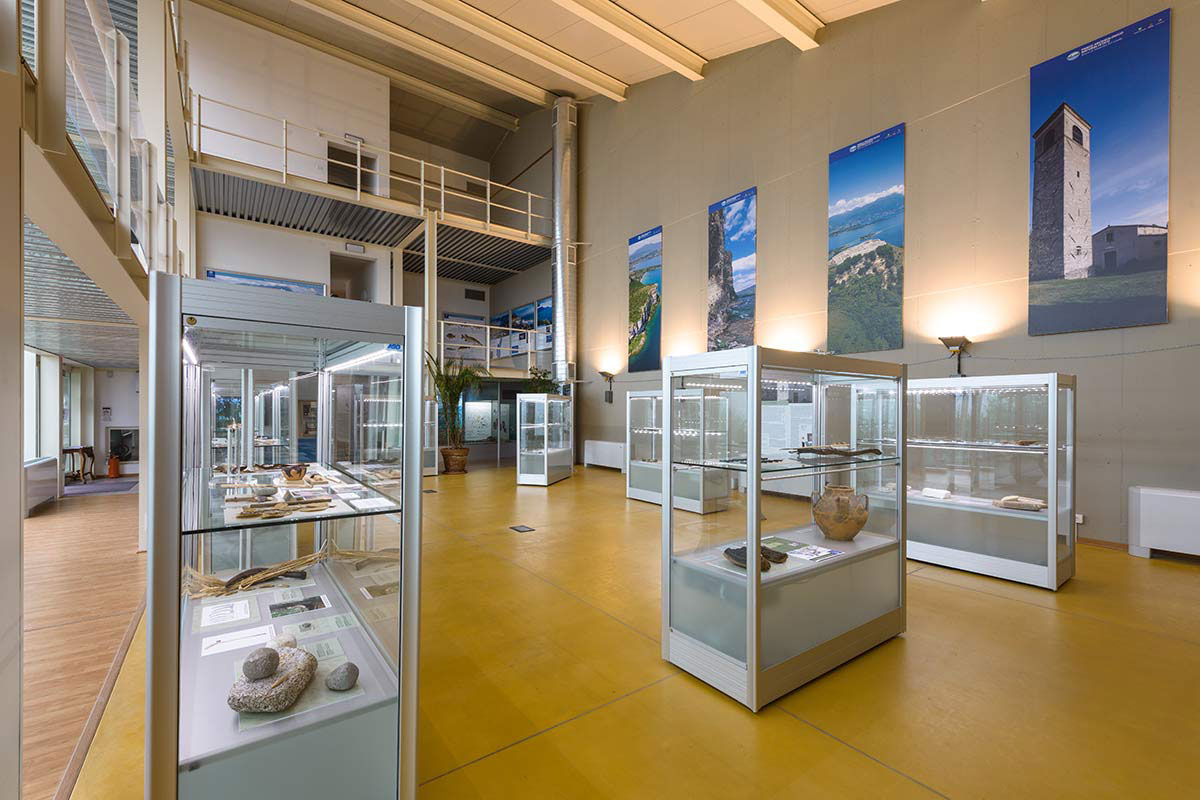
Materials forming the nucleus of the Civic Museum, established in February of 1973, were collected together thanks to the assiduous research activities undertaken in the early 70s of the last century by members of the Valtenesi Historical Archaeological Association. The continuation of surface research and numerous subsequent excavations conducted with the stratigraphic methodology, the last of which by the University of Padua in relation to some parts of the defensive walls of the medieval fortress in the summer of 2009, made it possible to enrich the exhibition spaces of the museum and, above all, knowledge on the history of Manerba del Garda area. The Valtenesi Archaeological Civic Museum, in the Archaeological Nature Park, is also to act as a welcome and information centre for visitors to the soon to be inaugurated Rocca, Sasso and Manerba del Garda Lakeside Park Nature Reserve. The arrangement of the archaeological exhibition, on the ground floor of the centre, follows, in a topographical and chronological order, the sequence of events in the area through information provided by materials found at individual settlements. Thus visitor’s attention is lead from the Neolithic settlement (circa 4000 BC) on the rocky promontory, named the ‘Rocca’ or the ‘Rock’, for which the north-west slopes were terraced with the support of robust retaining walls, to the Copper Age burial ground of small wooden buildings on the sheltered natural terrace of Riparo Valtenesi, then to the pile-dwelling settlement remains of Santo Sivino, which, in 2011, were added to the UNESCO World Heritage ‘Prehistoric Pile-Dwellings Around the Alps’. Following on are bronze ritual pins of the early Iron Age found on the summit of the Rocca, plausibly linked to the presence of an open-air place of worship. Representing the Republican and the first Imperial ages are finds possibly associated with the monumentalization of the area with a small shrine dedicated to the goddess Minerva. There are some remains of a Roman villa discovered at the foot of the Rocca and in the area of the Parish of St. Mary, and artefacts from early medieval buildings excavated in the area of the same Parish and its baptismal church. Finally there is an illustration of the system of medieval fortifications, still to be seen on the Rocca. On the first floor, the nature section displays a large collection of illustrations that show the plenitude and uniqueness of flora and fauna in the park area, which amply explains the reasons why man chose to settle in this area over the millennia.




